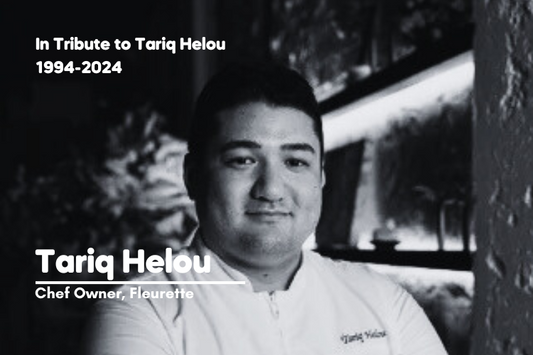How Sake Works With Fine Dining
Share

We speak to:
Aaron Jacobson
General Manager,
Zén
Can sake work with Asian cuisine, even the heavier flavours?
- Yes, I absolutely think so, even those with lots of heavy fats. Fermented sauces, gravies, are all components that have umami and so does sake
- The detractor to pairing with wine, for the most part, is that it has high acidity most of the time. That would usually get in the way of chilli or heat. So you can think of pairing with sweet wines, but sake is another avenue
- Learn and taste more styles of sake to find out which will suit your dishes
“I can pair 90% of my food with sake,” says Aaron Jacobson confidently. Before moving to Singapore, he had worked under mentor Yoon Ha at the three-Michelin star San Francisco restaurant Benu. Yoon Ha is one of the 273 professionals in the world who have achieved the rank of Master Sommelier and he was very into sake, according to Aaron. It was where Aaron first sampled the aged Tamagawa sakes from Kinoshita Brewery, a historic brewery that also employed Japan’s first foreign-born toji (sake brewer).
While Aaron’s mentor Yoon Ha enjoyed the modern, high-polished styles of sake such as Junmai Daiginjo, which are more suitable for mild dishes or high end sushi omakase, Aaron found himself drawn to sakes that are more historic, in terms of brewing methods that go back centuries, with funky, intense flavours. “More and more sake is being sold, and people appreciate the applications.
Is this kind of sake burgeoning the same way that natural wine is? Maybe not, but the energy is similar,” he says.
“When we were opening Zen, I was looking for sake but not the mass-market kind,” Aaron recalls. “I didn’t know a lot of suppliers but I found one who had the kind of umami rich sakes I was looking for, like koshu, kimoto and yamahai. Five years ago, it was more avant-garde.”
He explains enthusiastically, “All beverages have amino acids, but sake as a beverage is the only one with glutamate as amino acid. When you have an amazing dish that blows your cap off, that is most likely the concentration of glutamate or umami in it. Beyond the pairing of particular dishes and drinks for specific flavours, sake has the blanket ability to blend and meld with a lot of flavours, cos of that umami that comes with glutamate.”
In a fine dining restaurant, it’s often the case that the cuisine would be paired with the expected Burgundies, buttery Chardonnays or fine Champagne. Aaron took a chance and paired Zen’s signature heart-shaped waffles and ice cream dish with a Katsuyama Akatsuki Junmai Daiginjo sake that removed its rice mash with a centrifuge machine, increasing the complexity of the sake which is at 17 brix (which is on the sweeter side). While Zen’s chef-founder Bjorn Frantzen was skeptical at first, he was won over by the pairing and trusted Aaron with the beverages thereafter.
What are Aaron’s top benefits of having sake on your menu?
- When you approach a situation as creatively as possible you are going to expand your horizons and also your guests’.
- Most people don’t know much about sake and when they get a good pairing with sake, they are 10 times more likely to be impressed than with a good wine pairing.
- Sake is an ancient art form. It can change your perspective of what beverage can be to food and food pairings.
Trade professionals:
You are invited to attend Sake Matsuri’s Trade Show on 15 November 2024 at the iconic F1 Pit Building! Pre-register below for free.
Link: https://sakematsuri.sg/products/sake-matsuri-trade-show-friday-15th-november-2024
Sake Matsuri Trade Show
Date: 15 Nov 2024
Time: 12pm-4pm
Venue: F1 Pit Building, Garage, 1 Republic Boulevard
*Pre-registration is free, $50 for on-site entry
**Open to trade professionals only

